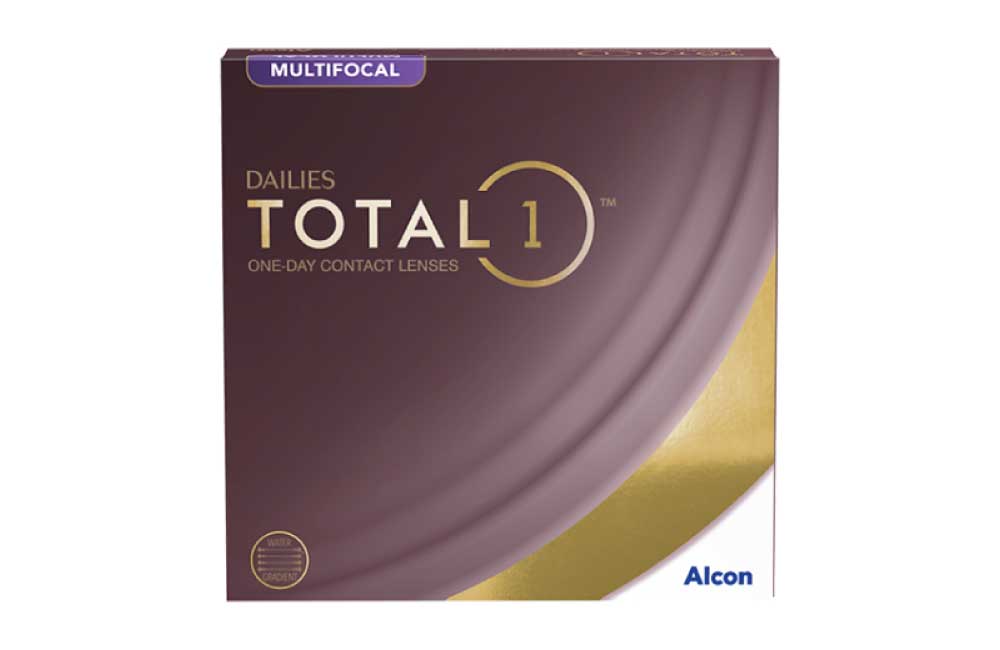A lot of my patients don’t realize that there are contacts for reading. Contact lenses, like every other medical device, have been through numerous changes over the years.
From becoming thinner for more comfort to becoming more transmissible to oxygen and safer for the eye, contact lenses will continue to pave a great path for a highly sought-after form of visual correction.
Another newer form of contact lenses are multifocal contacts. These contacts have a distance and a near portion built into the lens, effectively acting like a “bifocal” or “progressive” pair of glasses.
Just as some children require myopia management to slow the progression of their nearsightedness, most adults will require glasses or contacts for presbyopia.
The Reason Your Eyesight Deteriorates With Age: Presbyopia
Starting around 40-45 years of age, many patients begin noticing problems with reading. This is a condition called presbyopia, where the lens inside the eye doesn’t flex as much as it used to, making patients complain that their near vision, such as reading, is blurry.
In addition to multifocal contacts for presbyopia, another option for reading contacts is called monovision. This is where one eye is corrected for distance, and one eye is corrected for near vision. This form of vision correction often isn’t going to get the patient to 20/20 at distance and near, but it prevents the patient from having to wear glasses for 95% of their day!
Fine print or prolonged reading may prompt the need for glasses for further assistance. Some patients love this correction, while others complain of impaired depth perception. You really don’t know until you try it out!
The last form of correction for reading contacts is to give the patient single-vision contact lenses for near and have the patient wear glasses for distance viewing. This form of correction is good for people who may work at a close distance for a majority of their day; otherwise, the need to put glasses on and off for people who have to see at distance and near can be a nuisance.
Patients who are wearing specialty contact lenses such as scleral lenses, corneal gas-permeable lenses, and hybrid contact lenses can also have near vision incorporated into their contacts.
Can I Get Contact Lenses For Reading?
Yes, many patients today are great candidates for reading contacts. Multiple factors, many of which are described above, go into your eye doctor’s recommendation of which form of contacts may work best for you.
Another factor your eyecare provider may consider is the frequency in which these contacts are going to be used.
If a patient plans on wearing their contacts 2-3 times per week, the doctor may recommend daily wear contacts that get thrown away at the end of each day. If the patient will wear them the majority of days, the doctor may leave the decision up to the patient as to whether they would rather have daily, bi-weekly, or monthly contacts.
The recommendation of daily contacts for infrequent wearers is because monthly contacts need to be thrown away after a month of being opened, so these lenses may only be worn a few times in that span, whereas daily contacts can be worn on an as-needed basis and thrown away at the end of each day of wear.
Just like you never want to wear expired contact lenses (all packages are clearly labeled with expiration dates), you also don’t want to hear contact lenses past their intended replacement cadence!
Can Contact Lenses Replace Reading Glasses?
Yes! For millions of patients, contact lenses can definitely replace reading glasses for the vast majority of situations. Prolonged reading, fine print, and poor contrast situations (such as a newspaper with black letters on gray paper) are three situations where additional help from reading glasses may be needed.
Why Is It Getting Harder To See Things Up Close As I Enter My Mid-40s and Early 50s?
This is a condition called presbyopia. The inside of the eye contains a lens that, over time, becomes harder and less flexible.
This loss in flexibility is what causes near objects to appear blurry to many patients around 45 years old. The lens will continue losing flexibility until the patient reaches roughly 65-70 years of age, at which point many patients are reaching for their +2.50 readers.
How Much Do Reading Contacts Cost?
Reading contacts vary in price depending on whether you get monovision, single vision, or multifocal contacts. Daily, bi-weekly, and monthly contact lenses also affect price.
High prescriptions of myopia, which is also known as nearsightedness due to distant objects appearing blurry, and hyperopia, which is also known as farsightedness due to near objects appearing blurry, can influence the price as well.
The great news is that you can always use our free contact price comparison page to see which stores are selling your desired contact lens for the lowest price!
Are Reading Contacts Covered By Insurance?
Reading contacts should be covered by most vision insurance providers. Talk to your eyecare provider for questions pertaining to your insurance and their coverage.
Is There Anyone Who Shouldn’t Wear Reading Contacts?
Patients with present ocular infections or injuries, history of noncompliance with previous contact lenses, allergies to contact lens materials, use of certain ocular medications, and inability to insert or remove the contacts can all be factors for keeping patients out of contact lenses.
Allergic reactions to contact lens solutions may also be a contraindication, although patients can often switch to a hydrogen peroxide cleaner for their contacts and significantly reduce their symptoms.
Is There An Age Limit For Reading Contacts?
No, any patient struggling with reading can be fit into contact lenses; however, younger patients likely are suffering from a different condition than adults and their presbyopia. Younger patients also tend to struggle with inserting and removing the lenses because of their smaller palpebral apertures, which is the distance between their upper and lower eyelids.
What Are The Pros and Cons of Reading Glasses vs Reading Contacts?
The debate between contacts vs glasses goes back as long as I can remember. A significant pro for many presbyopic patients is that they feel contact lenses make them look younger without the need to wear glasses. A con for multifocal contact lenses is that they may cause nighttime glare due to the multifocal technology incorporated into the lens.
A pro for glasses is that patients don’t have to worry about cleaning their glasses every night like they would if they chose a bi-weekly or monthly mode of contacts. There is also a minimal learning curve with glasses as compared to contact lenses, especially inserting, removing, and getting used to the feel of them.
What Are Some Of The Top Reading Contacts On The Market?
I personally don’t have to wear glasses or contact lenses, but from a personal standpoint of trying different contact lenses while in the lab at school, I can attest that the feel and comfort of Alcon’s Dailies Total1 Multifocal contact lenses are among the most comfortable contacts that I have tried on. I also highly recommend Bausch + Lomb Ultra for Presbyopia.

A lot of my patients have also had success with Bausch and Lomb’s BioTrue contacts for presbyopia, CooperVision’s Biofinity Multifocal contact lenses, and Johnson & Johnson’s Acuvue Moist Multifocal contact lenses.
All of the major contact lens brands make a great multifocal option, and while some patients prefer one brand over the other for certain reasons, you can’t go wrong with any of the above brands of soft reading contact lenses!

Dr. Morgan Jones is a Doctor of Optometry (O.D.) completing a residency in ocular disease. She has experience in diabetic research, along with several years of clinical research. Along with being a community outreach leader and an avid mentor and tutor, she enjoys educating outside of clinic. Dr. Jones has a B.A. in Biology from Texas A&M University.